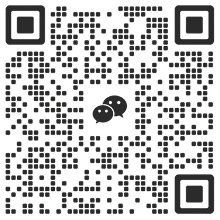Author: Yue Xiaoyu
Let me start with the conclusion and explain it in one sentence: ERC-7802 is a cross-chain standard that expands new features for existing ERC-20 tokens. By calling the ERC-7802 interface, standard cross-chain functions can be achieved.
01 Background
ERC-7802 is a cross-chain token standard jointly proposed by the Optimism team and the Uniswap team. Its goal is to enable tokens to maintain a unified standard when crossing chains.
We can see that the cooperation between Uniswap and Optimism is deepening: Unichain, which Uniswap previously announced to launch, is a member of the OP Superchain ecosystem, and now they have jointly proposed this cross-chain standard.
ERC-7802 was proposed to standardize cross-chain operations, which is very important for DEX (decentralized exchanges) like Uniswap and L2 solutions like Optimism.
The token standard on Ethereum has been evolving, from ERC-20 to ERC-721, ERC-1155, etc. ERC-7802 is part of this evolution, focusing on solving the specific problem of cross-chain.
02 Design Principles
Overall, the design principle of ERC-7802 is "bridge agnosticism": in cross-chain scenarios, the token contract is separated from the specific cross-chain bridging technology or protocol as much as possible.
This is a modular design that actually transfers complexity to the cross-chain bridge, separates the cross-chain logic from the token contract, and makes the structure of the token contract simpler and more modular.
The implementation of the token only needs to focus on its basic functions without having to consider the specific implementation of cross-chain transfers.
The bridge protocol takes on all the complexities associated with cross-chain transfers, including transaction verification, asset locking and release, cross-chain communication protocols, etc.
ERC-7802 defines a standardized interface for how tokens interact with cross-chain bridges, but is agnostic about how these bridges are implemented.
Any bridge protocol that complies with ERC-7802 can use this interface for cross-chain operations without modifying the token contract itself.
03 Specific Implementation
ERC-7802 defines a standardized interface with two key functions:
crosschainMint: Mints tokens for the recipient on the target chain as a result of destroying tokens from the source chain.
crosschainBurn: Destroy tokens on the source chain and initiate a cross-chain transfer, which is usually the starting point of a cross-chain transfer.
It is important to note that cross-chain minting and destruction is different from local minting and destruction. In cross-chain operations, the total circulating supply on all chains remains unchanged because tokens are transferred between chains instead of actually being created or destroyed.
ERC-7802 contracts support ERC-165, an interface detection standard that allows smart contracts to declare which interfaces they support. This helps ensure contract compatibility for cross-chain operations.
More importantly, ERC-7802 is compatible with ERC-20.
ERC-20 is a widely used homogeneous token standard on Ethereum, so it is important that the new standard is compatible with ERC-20, allowing existing tokens to cross chains to the new ecosystem more easily.
In this way, existing tokens can exist as ordinary ERC-20 tokens, and then realize cross-chain functions through the ERC-7802 interface.
04 Value of the Agreement
Solving the multi-chain experience problem is a major trend. ERC-7802 actually establishes cross-chain standards from the bottom-level protocol layer, which is complementary to the "chain abstraction" narrative.
ERC-7802 directly supports the goal of chain abstraction by providing a standardized cross-chain token transfer protocol, which is to allow assets to flow seamlessly across different chains.
The realization of chain abstraction requires the synergy of multiple technical standards and protocols, and ERC-7802 can be regarded as one of the key building blocks.
It can be said that ERC-7802 provides a specific solution for chain abstraction at the technical level, solving the technical problems of cross-chain transfer of tokens, while chain abstraction uses these solutions to provide a higher level of user experience and application development framework.
More importantly, the standard proposed by OP also lays the foundation for the interoperability of the OP Superchain ecosystem.
Currently, this protocol standard is still under discussion, so we can continue to pay attention to it.














